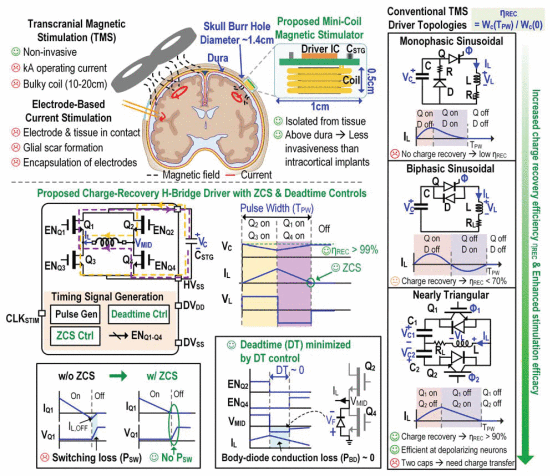Rice University,
Department of Electrical and Computer Engineering
Department of Bioengineering
34. A 24V Mini-Coil Magnetic Neural Stimulator with Closed-Loop Deadtime Control and ZCS Control Achieving 99.76% Charge Recovery Efficiency
Yingying Fan, Yuxuan Liu, Gerald Topalli, Roy Lycke, Lan Luan, Chong Xie, Taiyun Chi

Neural stimulation has a variety of applications in neuroscience research and clinical therapies. Conventionally, stimulation is delivered by implanted electrodes, such as in intracortical microstimulation (ICMS) and deep brain stimulation (DBS). However, long-term reliability associated with the electrode-tissue interface remains a fundamental challenge [1], due to foreign body responses that can lead to glial scar formation and encapsulation of electrodes (Fig. 17.5.1). Magnetic stimulation has emerged as a promising alternative to overcome this challenge, as no direct contact is needed between the stimulation coil and tissues. Its efficacy has been clinically verified through FDA-approved transcranial magnetic stimulation (TMS) for treating neurological disorders. However, TMS devices are power-hungry and bulky (Fig. 17.5.1), which not only restricts patient accessibility but also limits the spatial resolution of the stimulation.